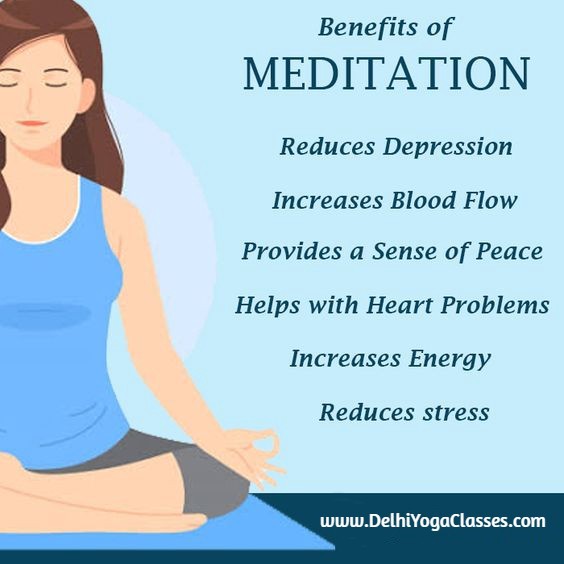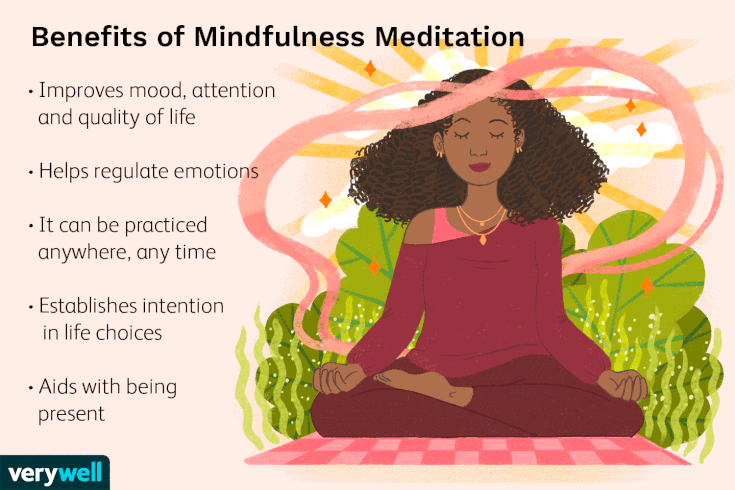
Meditation can help with chronic pain. It can reduce anxiety and stress, as well as improve mental clarity. This audio, which is 32 minutes long, can help you meditate and change how you feel about pain. It can also increase your tolerance for pain. But how do you get started? Find out how meditation can help you manage your pain. You have the final say. Here are some suggestions to help you get started.
Meditation for pain management teaches patients how to deal with pain. Patients are able to lessen their emotional reaction to pain through this process. They discover that pain is temporary and doesn't require a negative response. They are more capable of taking control of their own lives. It is common for pain to go undiagnosed, sometimes for years. Conventional medication will not work until the problem is diagnosed. Many people use meditation to reduce anxiety and inflammation.

Meditation for pain management is not only beneficial, but can also increase your overall quality life. Meditation can help you manage your pain and change how you view it. Regular meditation helps you develop positive attitudes toward life and the pain itself. In fact, research has shown that a daily meditation practice may improve your quality of living. You might be surprised at how happier you are when your pain is acknowledged and learned to live with it.
Meditation can have many health benefits. Chronic pain can create a vicious cycle that causes unending suffering. Meditating regularly will improve your mind and body's resilience. You will not only be able to tolerate discomfort and pain better, but your immune system will also become stronger. Meditation can also increase endorphin release which can help with pain management and mood improvement.
It can also reduce pain sensation. Meditation is a great way to reduce pain. This will make you less sensitive to pain and less hostile. You have a variety of meditation options, including guided meditation for pain relief and mindfulness meditation. Meditation for chronic pain has many benefits, so it could be the best option to manage your condition.

Aside from reducing pain, meditation also treats the psychological and social aspects of the condition. It can also reduce anxiety which can make patients more at ease and in control. In addition, it can reduce their anxiety, which can help them manage their limits. This can make them happier and more healthy. It is crucial to find the right meditation for you. Several free online guides for meditation are available online, and many of them are free.
FAQ
How can I live my best everyday life?
Find out what makes YOU happy. This is the first step in living a life that you love. Once you've identified what makes your happy, you can start to work backwards. You can also ask other people what they do to live the best lives possible every day.
You can also read books like "How to Live Your Best Life" by Dr. Wayne Dyer. He discusses finding happiness and fulfillment throughout our lives.
What is the best way to live a healthy lifestyle?
The healthiest lifestyle to live is one where you eat healthy food, exercise regularly, sleep well, and avoid stress. These guidelines will help you live a long, healthy life.
It's easy to start small with your exercise and diet. To lose weight, you can start walking for 30 mins each day. Swimming or dancing are great options if your goal is to become more active. An online fitness program such as Strava or Fitbit that tracks your activity could be a good option.
What is the best way to eat?
The best diet for you depends on several factors, like your age, gender, weight, health conditions, and lifestyle habits. You also need to consider how much energy you expend during exercise, whether you prefer low-calorie foods, and if you enjoy eating fruits and vegetables.
Intermittent Fasting is an alternative to traditional fasting if you are looking to lose weight. Intermittent eating means that you only eat specific meals throughout the day. This is in contrast to three large meals. You may find that this method works better for you than traditional diets that include daily calorie counts.
Studies have shown that intermittent fasting can improve insulin sensitivity and decrease inflammation. This could lead to improved blood sugar levels, and a lower risk of developing diabetes. Intermittent fasting has been shown to promote fat loss as well as improve overall body composition.
Why is it so important to lead a healthy lifestyle
Having a healthy lifestyle helps us live longer, happier lives. A healthy diet, regular exercise, good sleep habits, and stress management will help prevent diseases like heart disease, diabetes, cancer, and stroke.
Healthy lifestyles will help us to cope with daily stresses better and improve our mental health. A healthy lifestyle will help us feel more confident and younger.
Is being cold bad for your immune system?
It's been said that there are two kinds of people in the world; those who love winter and those who hate it. You might wonder why you feel so miserable in the cold, no matter how much you love or hate winter.
Our bodies were designed to work best in warm climates. Because of this, our bodies evolved to thrive and survive in hot climates.
But now we live in an environment that is very different from how our ancestors lived. We spend more time indoors than ever before, and are often exposed both to cold and heat extremes.
Because of this, our bodies have become accustomed to extremes. That means that when we do venture outdoors, we're left feeling tired, sluggish, and even sick.
There are many ways to avoid these side effects. One way is to make sure that you stay well-hydrated throughout the day. You can help flush toxins out of your body by drinking plenty of water.
You must also ensure that you are eating healthy foods. Your body will stay at its best when you eat healthy foods. This is especially beneficial for those who spend extended periods of time inside.
You can also meditate for a few minutes every day. Meditation helps to calm your mind and body which can make it easier to deal stress and illness.
Statistics
- In both adults and children, the intake of free sugars should be reduced to less than 10% of total energy intake. (who.int)
- According to the Physical Activity Guidelines for Americans, we should strive for at least 150 minutes of moderate intensity activity each week (54Trusted Source Smoking, harmful use of drugs, and alcohol abuse can all seriously negatively affect your health. (healthline.com)
- WHO recommends reducing saturated fats to less than 10% of total energy intake; reducing trans-fats to less than 1% of total energy intake; and replacing both saturated fats and trans-fats to unsaturated fats. (who.int)
- WHO recommends consuming less than 5% of total energy intake for additional health benefits. (who.int)
External Links
How To
What does the meaning of "vitamin?"
Vitamins are organic compounds naturally found in food. Vitamins aid us in absorbing nutrients from the food we eat. Vitamins are not made by the body, so they must be obtained through food.
There are two types of vitamins: water soluble and fat soluble. Water-soluble vitamins dissolve in water easily. These include vitamin C (thiamine), Vitamin B1 (riboflavin), Vitamin B2 (riboflavin), Vitamin B3 (niacin), Vitamin B6 (pyridoxine), Vitamin C, B1 (thiamine), Vitamin B2 (riboflavin), Vitamin B3 (niacin), and Vitamin B6 (pyridoxine). The liver and fat soluble vitamins are stored within the liver and in fatty tissue. Vitamin D, E, K and A are some examples.
Vitamins are classified based on their biological activity. There are eight main groups of vitamins.
-
A - Vital for normal growth and maintaining good health.
-
C is important for nerve function and energy production.
-
D - Essential for healthy teeth and bones.
-
E - Required for good vision & reproduction
-
K - Required for healthy nerves and muscles.
-
P - Essential for strong bones and teeth.
-
Q – aids digestion of iron and iron absorption
-
R - Red blood cells are made from red blood cells.
The recommended daily allowance for vitamins (RDA) varies based on gender, age, and physical conditions. The U.S. Food and Drug Administration (FDA) sets the RDA values.
For adults over 19, the RDA for vitaminA is 400 micrograms per daily. Pregnant women require 600 micrograms daily to support fetal development. Children ages 1-8 require 900 micrograms per day. Infants under one year of age require 700 micrograms per day, but this amount decreases to 500 micrograms per day between 9 months and 12 months of age.
Children between the ages of 1-18 need 800 micrograms per daily for obesity, while children overweight require 1000 micrograms. Children underweight or obese will need 1200 mg per day.
2200 mg of vitamin A per day is required for children aged 4-8 who have been diagnosed by anemia.
2000 micrograms per person is necessary for general health. Mothers who are pregnant, nursing, or have a high nutrient need will require 3000 micrograms a day.
Adults over 70 require 1500 micrograms each day, since they lose around 10% of their muscle mass every decade.
Women who have been pregnant or are lactating require more than the RDA. Pregnant and breastfeeding women require 4000 micrograms each day during pregnancy and 2500 Micrograms each day after delivery. Breastfeeding mothers require 5000 micrograms daily when breast milk production is occurring.